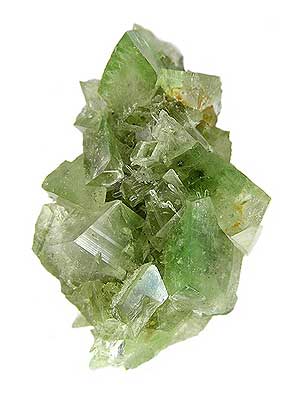| Crystal system | Monoclinic |
| Transparency | Transparent |
| Luster | Vitreous |
| Fracture | Conchoidal |
| Cleavage | 2, Perfect; 1, good prismatic; 1, pinacoidal |
| Specific Gravity | 2.70 |
| Hardness | 5 |
| Optical Character | Biaxial + ; Double Refractive |
| Refractive index | 1.574-1.588 |
| Birefringence | 0.14 |
| Dispersion | |
| Fluorescence | None under ultraviolet |
| Pleochroism | |
| Chemical Formula | Al2PO4(OH)3 |
| Comments | Dissolves very slowly in hot concentrated HCL |
| Streak | White |
Augelite (AW-jell-ite) is an aluminum phosphate hydroxide with the formula Al2PO4(OH)3 that sometimes occurs in colorless or nearly colorless as well as slightly brownish crystals. The name is derived from the Greek auge, meaning "brightness", in allusion to the usual transparent, colorless crystals.
The finest augelite crystals transparent, colorless and up to one inch in diameter come from the Champion sillimanite mine in Mono County, California. It also occurs in small, sharp crystals forming druses in tin veins at Machacamarca, Potosi, and Ouro, Bolivia.
Augelite's cleavage and optic character will separate it from
beryl. Its birefringence will separate it from labradorite.
Augelite's perfect cleavage is fairly easy to start, but although it
is brittle, it is not sensitive to ordinary dopping temperatures. It
should be polished with Linde A on wax. Crown angles of 42° and
pavilion angles of 43° are effective.


